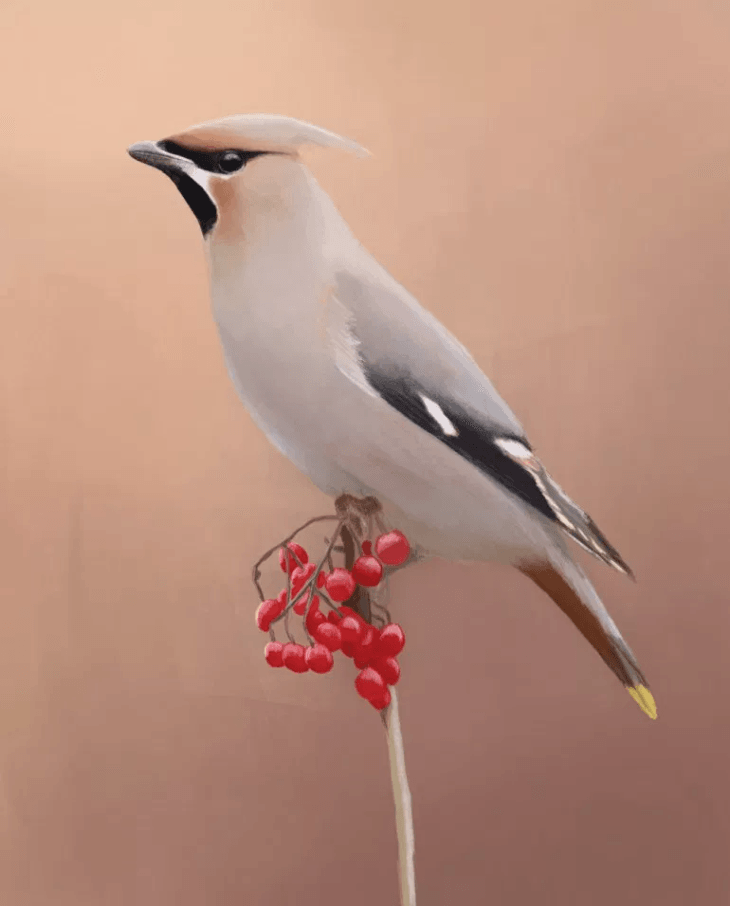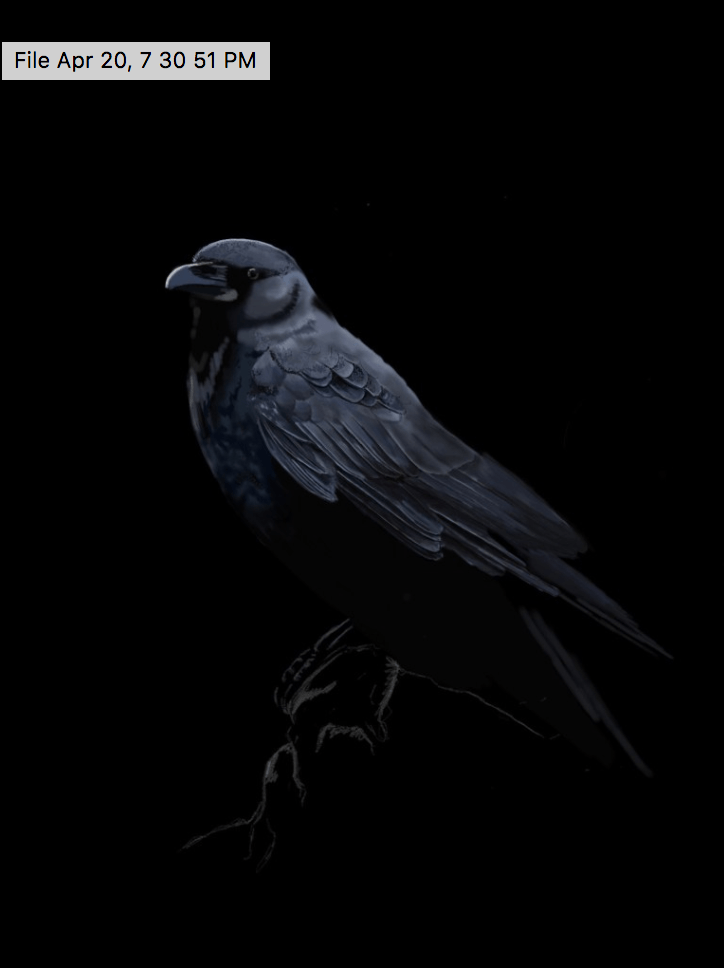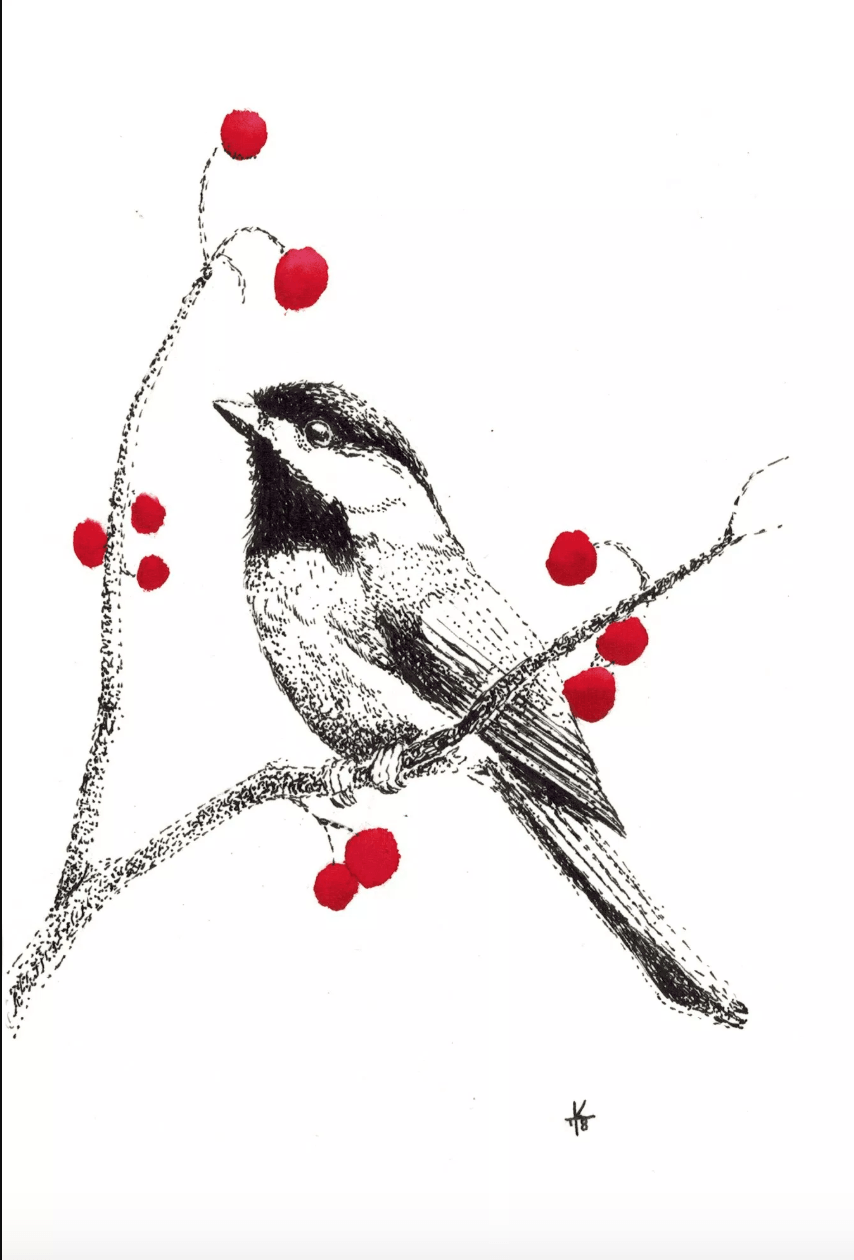Artist Spotlight: KC Gillies
February 26, 2020
In our regular Spotlight segment we explore artists’ experiences and inspiration to understand what defines and inspires their unique styles.
KC Gillies has a bold and unique style and is open to commissions, when creating hyper real 'portraits'. KC likes to study animals, in particular birds.

Can you give us a brief background on yourself?
I never intended to be an artist. I drew a lot as a kid, but my teen years were spent mostly outside with dogs and horses. I didn't have the time or desire to be inside drawing. However, about four years ago, I was snowed in and picked up an old sketchbook in an effort to relieve some boredom. It wasn't something I was exceptionally good at, but I quickly became addicted to creating and seeing my skills progress. Since then, more days have gone by that I have drawn than days that I have not. I started posting work on Instagram, and after a couple of years, people started inquiring about buying and commissioning me for work. Now, commissions are my main source of income. Previously, I did freelance WordPress support for work.
What kind of influence does your location have on your career?
I moved to South East Asia about a year and half ago. When I first moved here, the majority of my work was done in pen and ink. But with the expensive and unreliable shipping to and from here, I switched over to digital art. This area is also very... urban. Buildings are crammed into every little spare piece of land. Leaving very little room for nature in between. As a result, people here create beauty around them by keeping songbirds and plants. While the songbird trade isn't the most humane, regularly seeing and hearing these beautiful birds up close both inspires me as an artist and motives me to educate others through art about conservation and ethical aviculture. As a result, birds feature heavily in my work. Another way that being here has impacted my work is in my use of color. Being surrounded by concrete and steel makes me crave and seek out more color in my life. My work since being here has become progressively more vibrant.
What is your greatest source of inspiration?
Could you pick one piece of art that has made a lasting influence on you, and if so why?
A few years ago I had the privilege of seeing Frederic Edwin Church's The Icebergs in Dallas, TX. It's a ginormous painting from 1861 that has the most incredible detail and coloring in the highlights and shadows. It completely blew my mind that someone could create something so lifelike and detailed from just sketches and studies before the time of color photographs. It also really cemented in my brain that realism comes from lights and shadows, more than detail and coloring. That piece is always in the back of my mind when I'm trying to figure out how to light my portraits and paintings.
What skills or techniques do you find most useful in your line of work? Do you use primarily traditional or digital methods to create your artwork?
I think the most useful skills are always the most basic. A good understanding of form, anatomy, lighting, and shadows goes a very long way, no matter the media. These days, I paint and draw mostly with an iPad Pro, Apple Pencil, and a Wacom Cintiq display tablet. I can work fast and from anywhere, sketching out idea after idea without worrying about wasting paper or paint. When I need to slow down though I always bring my fountain pens back out for a stippling session. I don't sell much pen and ink work, but nothing is quite as therapeutic for me as drawing thousands of tiny dots!
How can people who are interested in discovering more of your work find it?
I post regularly on two Instagram accounts. @kcgillies
is my digital work and @kcgilliesillustration
is my traditional work. I also have a website kcgillies.com.
Scriba is a revolutionary digital stylus that is ergonomically designed to comfortably fit your hand and uses unique Squeeze-Motion technology. Order here.
Articles

In the period since COVID forced many of us back home and out of the office, remote work has become the new norm for many. The flexibility of working from home, especially for those with small children, is very compelling, but making a productive workspace is more than setting up a desk in the spare room. More people are seeking to create functional and comfortable workspaces in their homes, however, it can be difficult to strike the right balance between a professional office space and a cosy home environment. Here are some tips for designing a home workspace that meets both of these needs: Dedicate a specific area for work Designating a specific area for work is essential for separating work from leisure time. This could be a separate room or just a corner of a room. It is important to make sure that the workspace is free from distractions and clutter, as this will help you stay focused and productive. Choose the right furniture Ergonomic furniture is key to a comfortable and productive workspace. Invest in a comfortable chair, a desk that is the right height, and a good-quality mouse and keyboard. If you are prone to back pain, consider a standing desk. Add personal touches Just because your workspace should be functional, doesn’t mean it can’t be personal. Add photos, plants, and other personal items to make the space feel like your own. This will help create a sense of comfort and make you feel at home in your workspace. Good lighting Good lighting is essential for a comfortable workspace. If possible, place your desk near a window for natural light. If not, invest in a high-quality desk lamp to provide bright, even light. Keep it organised An organised workspace will help you stay productive and focused. Use desk organisers, filing cabinets, and other tools to keep your work area free from clutter. A clean and organised workspace will also help you start each day with a clear mind. Consider your work style Think about the type of work you do and how you like to work. If you prefer a minimalist workspace, opt for a simple desk and a few basic supplies. If you need space for multiple screens and other technology, make sure you have enough room to work comfortably. Take breaks It’s important to take breaks throughout the day to avoid burnout. Step away from your desk, go for a walk, or do some stretching exercises to clear your mind and recharge.











